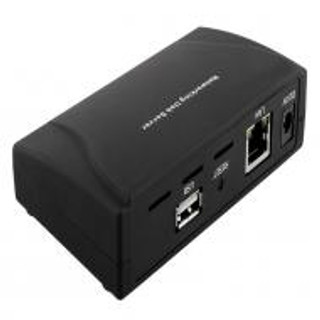
In the ever-evolving landscape of IT hardware, efficiency and streamlined operations are crucial for businesses of all sizes. One often-overlooked yet essential component in modern computer hardware setups is the print server. These devices optimize network printing by managing multiple printers, reducing workload, and enhancing productivity. Whether in a small office or a large enterprise, print servers play a pivotal role in ensuring seamless document management.
Understanding Print Servers in Computer Hardware
A print server is a dedicated device or software application that connects printers to multiple computers over a network. Instead of relying on a direct connection between a computer and a printer, a print server acts as an intermediary, processing print jobs and efficiently directing them to the appropriate printer. This approach eliminates bottlenecks and enhances the overall efficiency of computer hardware infrastructure.
Key Benefits of Print Servers
1. Enhanced Network Printing Efficiency
A print server simplifies print job management by distributing tasks among multiple printers. In large office environments, where multiple users send print requests simultaneously, print servers prevent congestion and reduce processing delays.
2. Cost-Effective IT Hardware Management
Organizations that invest in print servers save on costs associated with purchasing multiple high-end printers. A single print server can manage several printers, enabling businesses to optimize their computer hardware investments without compromising efficiency.
3. Centralized Administration and Control
IT administrators benefit significantly from print servers as they centralize printing operations. By leveraging IT hardware, administrators can monitor print queues, troubleshoot issues remotely, and enforce print policies to reduce unnecessary printing costs.
4. Improved Security and Access Control
With cyber threats on the rise, organizations must prioritize security in their computer hardware infrastructure. Print servers allow IT teams to regulate access permissions, ensuring that only authorized users can send print jobs. This reduces the risk of unauthorized access to sensitive documents.
Types of Print Servers in IT Hardware
1. Internal Print Servers
Internal print servers are embedded within a printer, eliminating the need for an external device. These print servers are ideal for businesses seeking an all-in-one solution without additional hardware.
2. External Print Servers
External print servers are standalone devices that connect to printers via USB, Ethernet, or wireless connections. These are highly flexible and can support multiple printers within a computer hardware network.
3. Software-Based Print Servers
Rather than using dedicated hardware, businesses can deploy software-based print servers on a dedicated server or a workstation. This solution is ideal for organizations that want to minimize additional IT hardware costs while maintaining centralized control over print jobs.
Choosing the Right Print Server for Your IT Hardware Setup
Selecting the right print server depends on an organization’s specific needs and existing computer hardware infrastructure. Key factors to consider include:
-
Network Compatibility: Ensure that the print server supports Ethernet, Wi-Fi, or USB, depending on your IT hardware configuration.
-
Printer Support: Verify compatibility with existing printers to avoid connectivity issues.
-
Scalability: Opt for print servers that can handle increasing workloads as your business expands.
-
Security Features: Look for encryption and user authentication to protect sensitive print jobs.
Optimizing Print Server Performance in IT Hardware Networks
To maximize the benefits of print servers, IT teams must adopt best practices such as:
-
Regularly updating firmware and drivers for compatibility with new computer hardware.
-
Monitoring print job logs to identify inefficiencies or unauthorized access.
-
Implementing load balancing to distribute print jobs evenly across multiple printers.
-
Configuring user permissions to prevent unauthorized usage and enhance security.
Future Trends in Print Servers and IT Hardware
As IT hardware evolves, print servers continue to integrate with cloud-based solutions, offering greater flexibility and remote accessibility. Emerging trends include:
-
Cloud Print Servers: Enabling users to send print jobs from any location without direct network connectivity.
-
AI-Enhanced Print Servers: Using artificial intelligence to optimize print job scheduling and reduce paper waste.
-
Integration with IoT Devices: Connecting print servers to smart office setups for automated workflows.
Conclusion
Incorporating print servers into your IT hardware infrastructure is a smart investment for any organization looking to streamline printing operations. By enhancing efficiency, reducing costs, and improving security, print servers play a crucial role in optimizing computer hardware networks. As technology advances, businesses must stay ahead by adopting modern print server solutions tailored to their evolving needs.





Leave a Reply